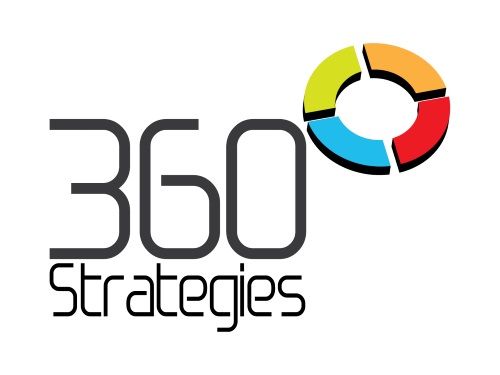Retail Strategy
A retail strategy plan outlines the approach a business takes to meet its sales and customer engagement goals in a competitive retail environment. Here’s a comprehensive retail strategy plan template that you can customize to fit your business:
1. Executive Summary
- Overview: Brief description of your business, its mission, and vision.
- Objectives: Key goals such as increasing sales, expanding market share, or improving customer loyalty.
- Target Market: Brief overview of the customer demographics you want to target.
2. Market Research & Analysis
- Customer Analysis: Define your target customers (age, income, lifestyle, preferences, etc.).
- Competitor Analysis: Identify key competitors, their strengths, weaknesses, and market positioning.
- Industry Trends: Review relevant industry trends such as e-commerce growth, consumer behavior shifts, and technology innovations.
- SWOT Analysis: Identify the strengths, weaknesses, opportunities, and threats to your business.
3. Product & Pricing Strategy
- Product Range: Determine the products or services you will offer, focusing on unique selling points (USPs).
- Pricing Strategy: Decide on your pricing model (premium, competitive, discounting, value-based, etc.) based on market research and competitor pricing.
- Product Positioning: How you will position your products in the market (luxury, budget-friendly, etc.).
- Inventory Management: Implement stock control systems to ensure inventory availability and minimize overstock/stockouts.
4. Sales & Marketing Strategy
- Brand Identity: Develop a strong brand with a clear message and visual identity.
- Customer Engagement: Implement customer loyalty programs, personalization, and interactive communication.
- Online and Offline Marketing Channels:
- Digital Marketing: Social media, SEO, email campaigns, online advertising, influencer collaborations.
- Traditional Marketing: In-store promotions, print advertising, direct mail, and event-based marketing.
- Sales Tactics:
- Upselling and cross-selling techniques.
- Discounts, bundles, and limited-time offers.
- Promotions and Events: Plan seasonal promotions, sales events, and clearance offers.
5. Retail Operations Plan
- Store Layout & Design: Ensure the physical space is optimized for customer experience and product visibility.
- Technology Integration: Utilize POS systems, inventory management tools, and e-commerce platforms.
- Customer Service Standards: Establish customer service training for employees and create clear service protocols.
- Supply Chain Management: Create efficient processes for sourcing, shipping, and delivering products.
6. E-Commerce Strategy
- Online Store Optimization: Ensure the online store is easy to navigate, mobile-friendly, and optimized for search engines.
- Omni-channel Approach: Integrate online and offline retail experiences (e.g., buy online, pick up in store).
- Digital Customer Service: Implement live chat, chatbots, or other online support channels.
- Payment Methods: Offer a variety of payment options, including digital wallets, credit cards, and installment plans.
7. Financial Plan
- Budgeting: Define budget allocations for marketing, inventory, staffing, and technology.
- Revenue Goals: Set monthly/quarterly/yearly sales targets.
- Cost Control: Identify strategies to reduce unnecessary expenses (e.g., efficient supply chain, negotiation with suppliers).
- Profit Margins: Focus on maintaining healthy profit margins through effective pricing and cost management.
8. Staffing & Human Resources
- Team Structure: Define roles and responsibilities for each department (sales, customer service, marketing, inventory, etc.).
- Training & Development: Provide ongoing training to enhance employee skills and product knowledge.
- Incentive Programs: Create employee incentive schemes to boost motivation and performance.
9. Customer Experience & Retention
- Customer Journey Mapping: Understand the steps a customer takes from discovery to purchase and create touchpoints for engagement.
- Loyalty Programs: Implement customer loyalty programs to reward repeat business.
- Feedback Loops: Collect and analyze customer feedback through surveys, social media, and reviews to improve the offering.
- After-Sales Support: Provide post-purchase services like easy returns, exchanges, and maintenance support.
10. Key Performance Indicators (KPIs)
- Sales Metrics: Track sales growth, average transaction value, conversion rates, and sales per square foot (if applicable).
- Customer Metrics: Measure customer retention rates, loyalty program participation, and Net Promoter Score (NPS).
- Marketing Metrics: Monitor website traffic, click-through rates, social media engagement, and return on ad spend (ROAS).
- Operational Metrics: Assess inventory turnover, stockouts, and delivery times.
11. Risk Management
- Market Risks: Identify potential shifts in consumer behavior or economic conditions and develop contingency plans.
- Operational Risks: Minimize disruptions by ensuring business continuity plans and supply chain resilience.
- Legal Risks: Ensure compliance with industry regulations, taxes, and other legal obligations.
12. Implementation Timeline
- Short-Term Goals (0-6 months): Focus on quick wins such as launching a new marketing campaign, store renovation, or e-commerce optimization.
- Medium-Term Goals (6-12 months): Expand your product line, improve customer service processes, or implement an inventory management system.
- Long-Term Goals (1-3 years): Grow your brand recognition, expand to new locations, or enter new markets.
Conclusion
This retail strategy plan serves as a blueprint for driving business success. It outlines how to understand your market, create effective sales and marketing strategies, enhance customer experience, and maintain operational efficiency while achieving financial growth.

